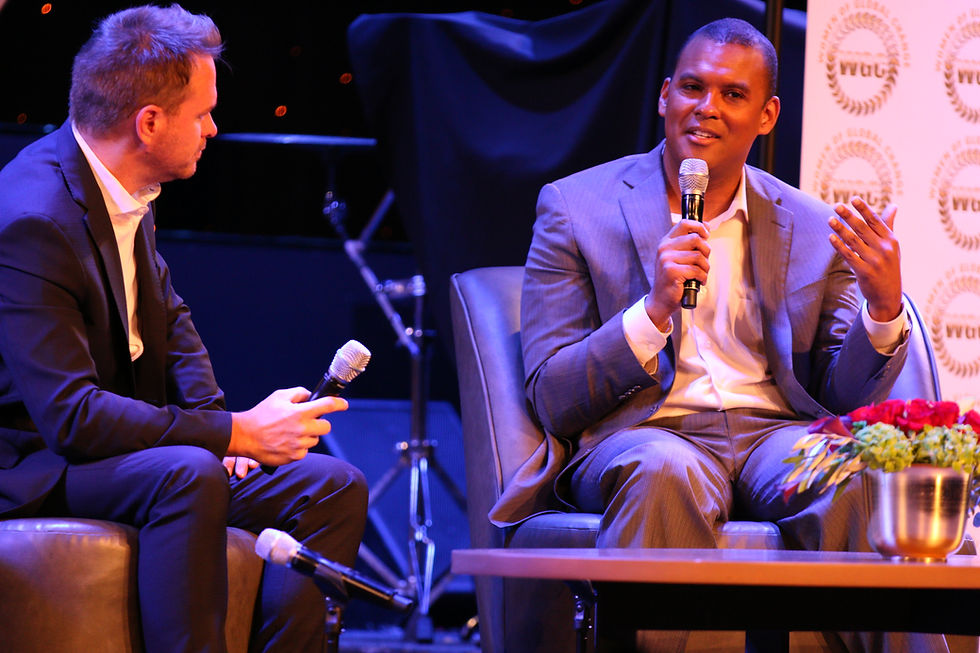THREE STRATEGIES TO CAPITALIZE ON CAUSE-CONSCIOUS CONSUMERISM
- Ascendant
- Jun 10, 2019
- 4 min read

In today’s business climate, where the marketplace is far more socially minded, philanthropy, corporate social responsibility and cause-conscious consumerism are becoming fundamental and even foundational components of daily operations. Both consumers and employees expect companies to not only engage in philanthropy but also be a demonstrable force of change.
Exemplifying this truth is data from EngageForGood.com, which reports that "33% of consumers are now choosing to buy from brands they believe are doing social or environmental good." Data also shows that 72% of consumers have made donations at the cash register and 84% of Americans feel companies have a social responsibility to facilitate change on important issues.
Three Ways To Adopt A Cause-Conscious Model
The following are three worthy strategies to fuse cause-conscious consumerism into your business model.
1. Establish a pricing model aligned with causes that evoke tremendous emotion.
The owners of Nolah Sleep, Daniel Galle and Anna Hjoellund, are making a difference in the mattress industry and the environment by proffering “sleep with a purpose.” The company’s next-generation approach breaks the mold in a myriad of ways, but primarily with its environmentally-friendly Nolah AirFoam mattress.
The product is thoughtfully designed with a type of foam that’s entirely free from harmful substances like ozone depletes, PBDE flame retardants, formaldehyde, phthalates, mercury, lead and other heavy metals.
After launching Nolah, Galle and Hjoellund realized their mattresses were being marked up by traditional retailers as much as 3,000%. So, they began selling exclusively online, becoming a pioneer in the online mattress movement. Nolah Sleep’s “bed-in-a-box” is offered through its website with factory direct pricing, allowing consumers to avoid the outrageous markups. All Nolah mattresses are shipped direct-to-doorstep in an easy-to-handle, eco-friendly cardboard box that reduces packaging volume by a whopping 80% as compared to conventional mattress shipping.
Galle and Hjoellund are also cause-driven, giving back through their “One Nolah Sold Equals One Wildlife Adopted” initiative in partnership with the Defenders of Wildlife organization. As part of the checkout process, each time a Nolah mattress is purchased, the consumer can choose from more than 20 endangered animals — including bald eagles, snowy owls and dolphins - and are then sent an official wildlife adoption certificate as proof that their contribution helped protect American wildlife.
Other entrepreneurs can emulate Nolah by taking a hard look at industry practices and eliminating any factors that come between the consumer and the product that do not add value. Nolah's success is an example of why this type of direct-to-consumer marketing is currently taking retail by storm. Both businesses and customers benefit from lower overhead with businesses enjoying a higher bottom line and customers enjoying lower prices.
Companies can easily incorporate emotion-evoking cause consciousness into their business model by partnering with charitable organizations and building the donation or other support method into the checkout process. Doing this means there is literally zero friction between purchase and donation.
2. Gamify the act of “doing good” to add elements of fun competition.
The charitable online community xocial (pronounced soh-shuhl) is literally making a game out of philanthropy through fun and simple xocial campaigns. Leveraging a concept it refers to as competitive kindness, xocial actually measures each participant's favorable contributions with an XO Score, a calculation representing the direct impact or result of a person’s, team’s and entire company’s xocial campaign.
To initiate a campaign, a company simply sets up a xocial profile page supporting a particular goal or cause of their own choosing. As challenges are completed, points are tallied and a leader board is displayed on the company's campaign profile page. Visitors to the page — not just employees, but also customers and potential customers — can see what the company and its employees have accomplished.
With xocial, charitable endeavors are being carried out while companies are demonstrating their commitment to philanthropy. Alternatively, companies can create their own gamification system by incorporating three fundamental components: a points system, badges (or any other tangible token to reward participants as they reach certain benchmarks), and a leader board. This system can be adapted for use in support of nearly any type of cause, and can be used internally with employees or can be expanded to include customers.
3. Establish a foundation exemplifying above-and-beyond efforts and intentions.
Scott Petinga has overcome numerous hardships, including a battle with cancer, to enjoy massive success as an entrepreneur and now author of the book No One Ever Drowned in Sweat.
A proponent of B Corp and sustainable philanthropy as a business model, Petinga proves profit and philanthropy can go hand in hand. Businesses and entrepreneurs can do the same by becoming a certified B Corp.
The process involves meeting higher and more rigorous standards in the realms of social and environmental performance, accountability and transparency as set by B Lab, the founding organization behind the B Corps concept. Status as a certified B Corp helps enable businesses to achieve B Lab's stated goal of aspiring to "use the power of markets to solve social and environmental problems."
As Nolah, xocial and Petinga prove, cause-based consumerism is definitely not a fad, but rather a sustainable — and some would even say mission critical — way of doing business today. With the ease and fun with which entrepreneurs and businesses can engage in cause-conscious endeavors, there's absolutely no reason not to be a part of this growing philanthropic movement.







